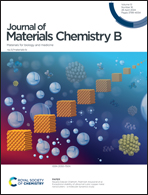Near-infrared-driven upconversion nanoparticles with photocatalysts through water-splitting towards cancer treatment
Abstract
Water splitting is promising, especially for energy and environmental applications; however, there are limited studies on the link between water splitting and cancer treatment. Upconversion nanoparticles (UCNPs) can be used to convert near-infrared (NIR) light to ultraviolet (UV) or visible (Vis) light and have great potential for biomedical applications because of their profound penetration ability, theranostic approaches, low self-fluorescence background, reduced damage to biological tissue, and low toxicity. UCNPs with photocatalytic materials can enhance the photocatalytic activities that generate a shorter wavelength to increase the tissue penetration depth in the biological microenvironment under NIR light irradiation. Moreover, UCNPs with a photosensitizer can absorb NIR light and convert it into UV/vis light and emit upconverted photons, which excite the photoinitiator to create H2, O2, and/or OH˙ via water splitting processes when exposed to NIR irradiation. Therefore, combining UCNPs with intensified photocatalytic and photoinitiator materials may be a promising therapeutic approach for cancer treatment. This review provides a novel strategy for explaining the principles and mechanisms of UCNPs and NIR-driven UCNPs with photocatalytic materials through water splitting to achieve therapeutic outcomes for clinical applications. Moreover, the challenges and future perspectives of UCNP-based photocatalytic materials for water splitting for cancer treatment are discussed in this review.

- This article is part of the themed collection: Journal of Materials Chemistry B Recent Review Articles


 Please wait while we load your content...
Please wait while we load your content...